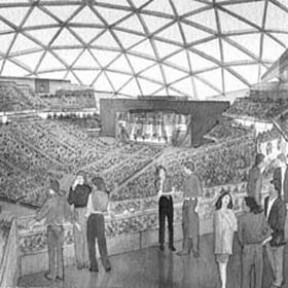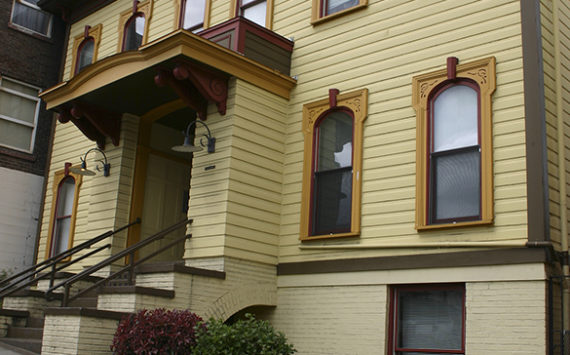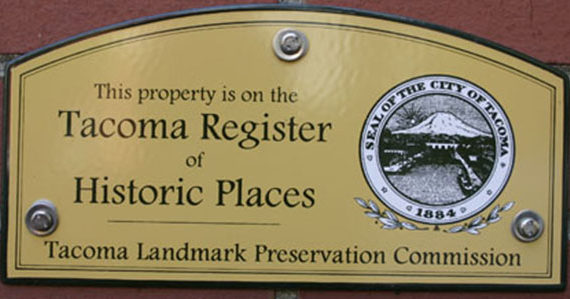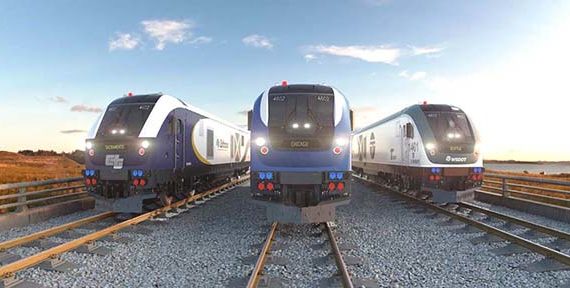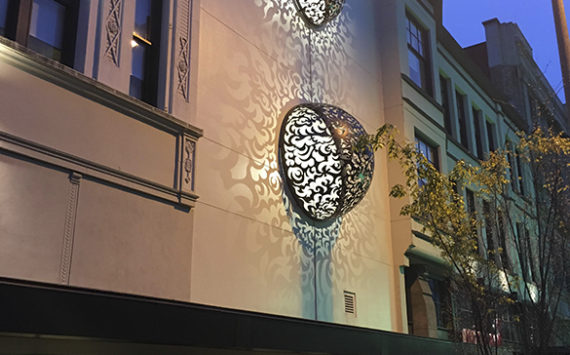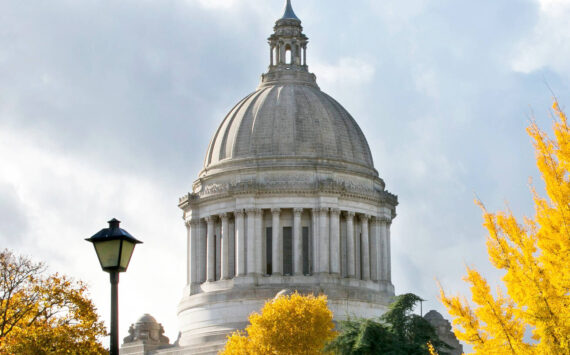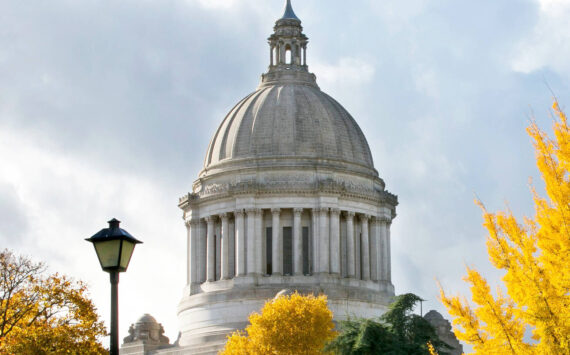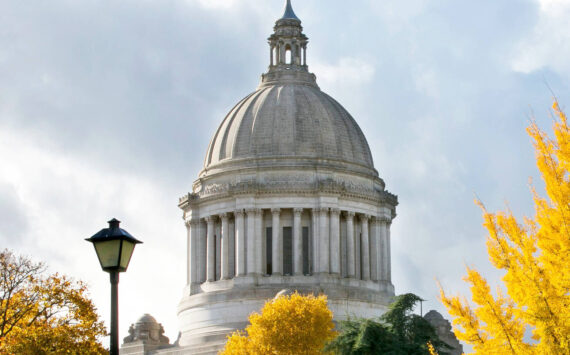Consider for a moment these facts: when the Tacoma Dome opened, Dallas topped the television ratings, Flashdance was breaking records at the box-office, and the Apple Macintosh computer had yet to reach American homes.
Fast-forward 20 years, and virtually nothing in the building has changed: the narrow, ash-colored concourse; the broken-down ice maker, no longer of use at skating events (event organizers must provide their own); even the trough-style urinals in the mens restrooms. The domes outdated features provide it a certain museum-like quality that doesnt sit well with its operators and (many people argue) visitors.
We simply cannot continue to defer maintenance on the Tacoma Dome, said the Tacoma Domes Assistant Director Jody Hodgson, during the City Council study session yesterday. The Dome absolutely needs physical and capital improvements to stay out of the citys general fund.
According to Hodgson and Mike Combs, Tacoma public assembly facilities director, if the Dome is not renovated, funds to operate it will have have to come from the citys general fund as soon as 2008 (the city owns the building, yet the Tacoma Dome operates as an enterprise fund; it exists solely on its profits and losses). In less than 10 years, the general fund will subsidize the dome to the tune of $5 million per year, said Hodgson.
At issue is the Domes ability to compete with more contemporary venues in the region, including White River Amphitheatre in Auburn, Everett Arts Center, and Key Arena in Seattle.
Last fall, Hodgson and Beth Sylves, Marketing Manager at the Tacoma Dome (see Tacoma Dome 2.0, Index Oct. 28, 2004), indicated that several key industry trends have changed over the years, limiting the Domes ability to compete in the market.
Ticket prices have gone up irregardless of the economic climate. The increase in ticket prices results in increased expectations of event-goers. If somebody pays $125 for a concert ticket, Sylves explained, they expect nice amenities, comfortable seating with a nice sight line, and good concession options. Were a 22-year-old building, so were not really meeting those expectations.
Also, the competition is much different. Case in point: the two biggest concert promoters — Clear Channel and House of Blues — have built their own amphitheaters (White River and the Gorge, respectively). Large-scale summer concerts that would have otherwise gone to the Dome are now held at these outdoor amphitheaters.
Moreover, the concert industry has experienced a decrease in ticket-sales and attendance. The mega-concerts with 20,000 people in attendance are rare these days. According to industry statistics, out of the top 100 concert tours in 2003, only 13 tours averaged ticket sales in excess of 18,000; 50 tours averaged less than 8,000 ticket sales. The statistics indicate a trend toward smaller concerts.
That said, leaving the the Dome untouched as a large-arena venue that lacks the contemporary amenities and abilities to adapt to the entertainment industrys tastes threatens the facility.
In 2002, concerts generated 38% of the Domes revenue. That number dropped to 30% in 2003. Similarly, the net loss in revenue for 2003 was $200,000. We are really starting to project that we are going to stay at a deficit because of the competitive forces and the changes in the industry, said Sylves.
At the study session Tuesday, Brian Parker, a consultant with Minneapolis-based Conventions, Sports & Leisure International, illustrated the Domes competitive weaknesses. According to Parker, the Dome is not ideal for many event types, expensive in terms of set-up and event costs, lacks premium seat offerings, provides poor artificial turf, and lacks a column-free space in the Exhibition Hall.
Combs told the council that the objectives for renovating the dome are to improve the guest experience, increase operating efficiencies, create new revenue, and improve marketability. Specific goals within those objectives include: improved seating bowl and playing surfaces; concourse level additions; arena level enhancements; installation of a new sound system; Exhibition Hall improvements; traffic and parking improvements; MEP upgrades; replacement of event services equipment; and new lighting systems.
Initial plans for renovations called for considerable upgrades — including a grand entrance and other amenities. Combs and his staff have considerably scaled back those plans, and are targeting two options.
The first option would create a renovated Dome and Exhibition Hall. Among the advantages: improves the quality of the guests experience and building marketability; address es the concerns for a major system failure by replacing old equipment; and reduces operation costs with more efficient systems. Among the disadvantages: does not address concert industrys trend for smaller venues; not as intimate of an environment for a sports franchise; and budget limitations and structural design wont allow for all needed improvements.
The second option would create a new small-capacity arena and minor Dome upgrades. Among the advantages: satisfies niche for small-capacity concerts; creates new, intimate seating bowl for sports franchise; introduces a potential for hosting concurrent events in both facilities. Among the disadvantages: does not address critical needs in Tacoma Dome; reduces the total floor square footage for flat shows; and costs would exceed tax-neutral proposition budget.
Indeed, funding for renovations to the dome may be competitive. Metro Parks has indicated it plans to present another bond proposition in November (the departments last effort to raise $60 million for area parks was rejected by voters last year). Local fire and police departments may also ask voters for additional funding this fall. Funds for Dome renovations would come from a bond proposal, which Combs and his staff are recommending to the City Council. Such a proposal differs from the others. The bonds that initially funded construction of the Tacoma Dome 25 years ago expire this year. The new proposal would be a tax-neutral re-issuance of that bond. By re-issuing the financial package, the net effect is neutral to the property owner.
The last thing we want is to sit at the table and compete with the police and fire departments, said Hodgson.
According to Sylves, public support for renovations to the Tacoma Dome is strong. She cited a study conducted last June by Elway Research, wherein 400 city residents were polled on the issue. According to that poll, 56% favored a tax-neutral financial package, and 8% favored a tax increase.
Dome operators argue that the investment does make sense. The Domes economic impact is $42 million annually. Total aggregate spending by dome attendees, participants, and event producers is $46 million annually ($25 million of that is new money from visitors and outside sources).
These options are devoid of buzz words, said Hodgson. We are proposing a basic plan that would allow us to continue to have a positive economic impact on Tacoma for the next 20 years.
Councilmember Julie Anderson commented, This plan is significantly scaled down — not because you were afraid to dream big. Rather, it genuinely reflected the cost analysis. As a city that is unfairly accused of monument building, it looks like we dreamed big at first, but scaled down because it didnt pencil out.
Councilmember Thomas Stenger expressed concern about the idea of several bond issues competing with each other during the Primary Election. By putting this on the ballot, he said, I think we would defeat any other tax issue. He added that the citys debt focus has been on entertainment and tourism dollars — not basic improvements.
Councilmember Bill Evans commented, This is a revenue-producing venue. This is practical in the context of renovations to a tremendous asset.
Councilmember Rick Talbert indicated that keeping the Dome open and functioning was a responsibility.
An advisory committee of residents will meet March 9 to discuss plans for presenting the issue to voters, Dome officials will appear at the City Council study session on April 5, and the council is scheduled to vote on a resolution April 12.
